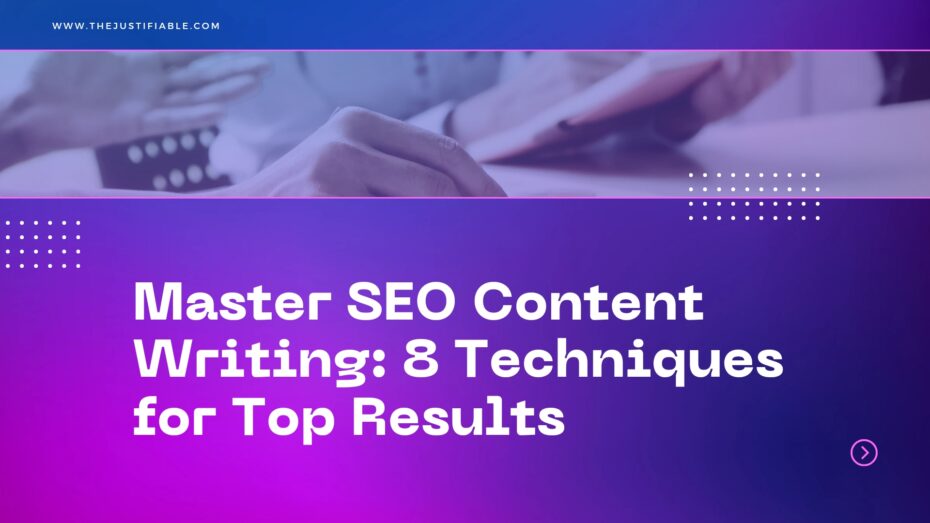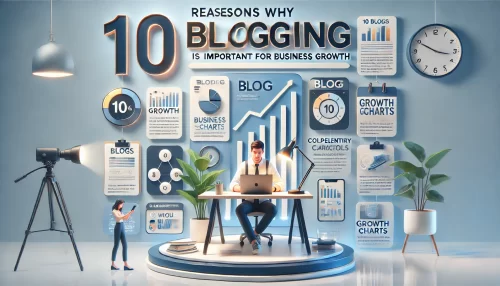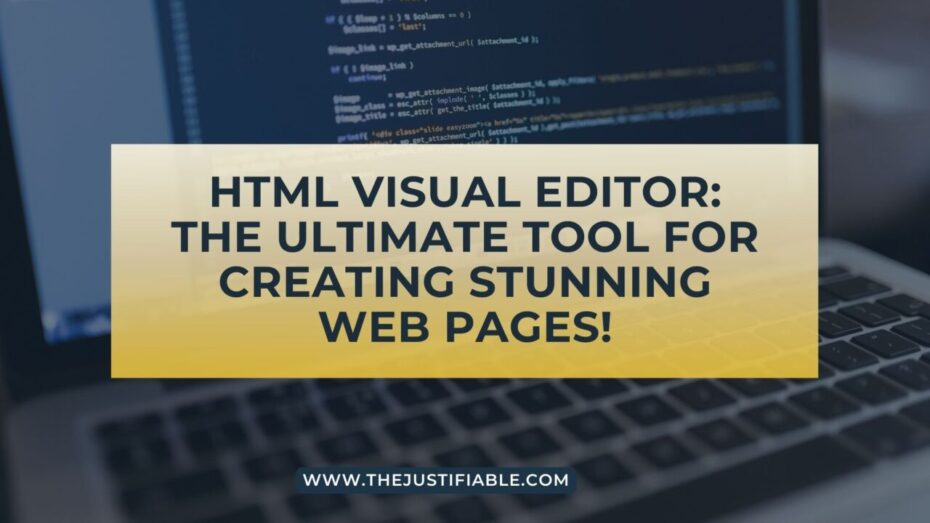Table of Contents
SEO content writing is an essential skill set for anyone looking to dominate search engine rankings and drive significant traffic to their website. In the digital age, where the competition for online visibility is fierce, understanding and mastering the nuances of SEO content creation can set you apart.
This comprehensive guide will walk you through 8 crucial techniques to elevate your SEO content writing. From leveraging keyword research to optimizing your content structure for readability, each step is designed to enhance your online presence and engage your audience effectively.
Whether you’re a seasoned marketer or a budding content creator, these insights will empower you to craft content that not only ranks well but also resonates with your target audience, ensuring top results in the ever-evolving landscape of search engine optimization.
1. Leverage Keyword Research for Maximum Impact: A Data-Driven Approach
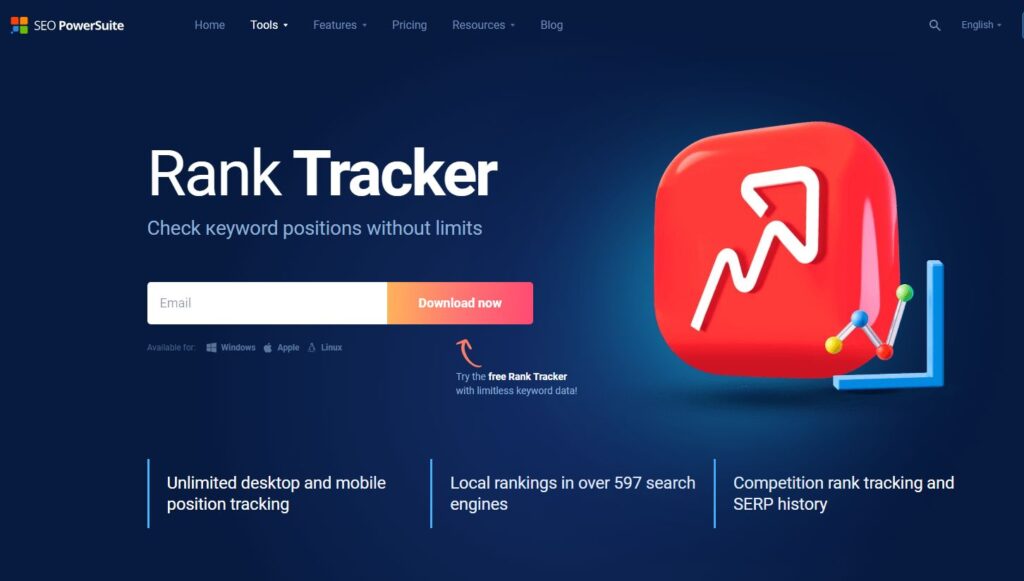
Have you ever wondered how some content manages to rank at the top of search engine results pages (SERPs) while others remain buried on page ten? The secret lies in effective SEO content writing, starting with comprehensive keyword research. But what tools should you use, and once you’ve found your keywords, how do you integrate them seamlessly into your content?
Keyword research is not just about finding words; it’s about understanding your audience and the language they use when searching for your content, services, or products online. This initial step is crucial because it lays the foundation for your SEO strategy, helping you identify the terms and phrases that your target audience uses. By targeting these keywords, you’re essentially speaking the same language as your potential visitors, making it more likely for them to find you.
The magic of keyword research lies in its ability to open up a dialogue with your audience before they even land on your page. It’s about anticipating their needs, questions, and the solutions they seek. This foresight enables you to craft content that answers their queries, meets their needs, and solves their problems, positioning your site as a valuable resource. When done correctly, keyword research not only improves your visibility in search engines but also enhances the user experience, making it a win-win situation.
Harnessing the Right Tools for Effective Keyword Discovery
The journey to effective SEO content writing begins with the right set of tools. But with so many options available, how do you choose the best ones for keyword discovery? The key is to select tools that not only provide data on search volume and competition but also offer insights into search trends and user intent.
Tools like Google’s Keyword Planner, SEMrush, and SeoPowersuite are invaluable for any content creator looking to boost their SEO strategy. They allow you to peer into the search behaviors of your audience, revealing not just what people are searching for but how those search queries change over time. This dynamic view into the minds of your potential visitors is what sets the stage for effective content planning.
Utilizing these tools effectively requires a blend of creativity and analytical thinking. It’s not just about the numbers; it’s about interpreting the data and understanding how it relates to your content goals. By identifying the keywords and phrases with the highest potential for your niche, you can prioritize your content creation efforts, ensuring that every piece you publish has a strong chance of ranking well in SERPs.
Integrating Your Keywords: Beyond the Basics
Once you’ve identified your target keywords, the next step is integrating them into your content. However, this process goes beyond simply sprinkling keywords throughout your text. It’s about creating a seamless blend of SEO optimization and engaging, informative writing that provides genuine value to your reader.
The art of keyword integration is subtle. Your primary keyword and its variations should appear naturally within the text, in places where they make the most sense contextually. This includes the title, headings, meta descriptions, and within the body itself. However, the key is to use them sparingly and strategically, avoiding the pitfall of keyword stuffing, which can harm your SEO efforts and diminish the readability of your content.
Moreover, integrating your keywords extends beyond the written word. Consider how these keywords can be woven into the fabric of your site’s overall user experience, from the navigation menu to the alt text of images. This holistic approach to SEO content writing ensures that every element of your site works together to attract, engage, and convert your target audience, driving maximum impact from your keyword research efforts.
2. Crafting Compelling Meta Titles and Descriptions: The 60-Character Secret
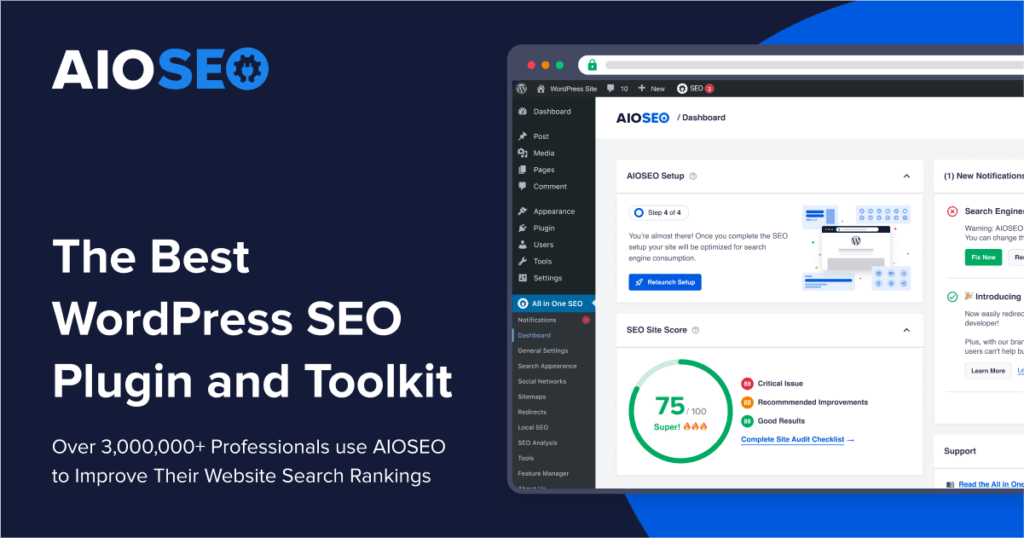
Did you know that the first impression of your webpage in search results is often the deciding factor for whether a user decides to visit your site? This first impression is shaped by your meta titles and descriptions, two crucial components of SEO content writing. Crafting these elements effectively can significantly impact your click-through rates (CTR) and search engine rankings.
Meta titles and descriptions serve as a brief but powerful advertisement for your content. A well-crafted meta title grabs attention, while a compelling meta description provides a succinct preview of the page’s content, enticing the reader to click through for more. Both should include your primary keyword and variations to match search queries more closely. This not only aids in SEO but ensures that the content is immediately recognized as relevant by potential visitors.
The challenge lies in condensing the essence of your content into these concise snippets. Meta titles are best kept under 60 characters to ensure they display fully in search results, while meta descriptions should be around 150-160 characters. This brevity forces you to distill your content’s value into a few compelling words, a task that requires creativity and a deep understanding of your audience’s needs and search behaviors. By achieving this balance, you create a gateway that invites more clicks, driving traffic and improving your site’s SEO performance.
The Art of Meta Writing: Balancing SEO and User Engagement
Crafting meta titles and descriptions is an art form that balances SEO optimization with the need to engage the user. This balance is crucial; over-optimization can lead to clickbait-like titles that disappoint users, while a lack of keywords can result in missed SEO opportunities. The goal is to integrate keywords naturally, making your meta snippets both searchable and appealing to potential visitors.
Engaging meta descriptions act like a handshake between your site and potential visitors, offering a promise of what’s to come. They should echo the user’s search intent, providing assurance that within your content lies the answer they seek. This not only improves your site’s relevance in the eyes of search engines but also boosts the likelihood of clicks from genuinely interested users.
Remember, while keywords are important, your ultimate goal is to convince real people to visit your site. Therefore, your meta writing should reflect the unique value your content offers, speaking directly to the needs and curiosity of your audience. By striking the right balance between SEO and user engagement, you create compelling meta snippets that serve as irresistible invitations to explore your content further.
Real-World Examples: Boosting Click-Through Rates with Power Words
Incorporating power words into your meta titles and descriptions can dramatically increase your click-through rates. Power words are emotionally charged or action-oriented words that trigger a response from the reader, compelling them to click. Examples include “Discover,” “Unlock,” “Secrets,” and “Free.” These words tap into the user’s curiosity and desire for gain, making your content more enticing.
Real-world examples show that meta titles and descriptions using power words can significantly outperform those that don’t. For instance, a meta title like “Unlock the Secrets to Rapid Weight Loss” is more likely to attract clicks than a straightforward “How to Lose Weight Fast.” The use of power words like “Unlock” and “Secrets” adds an element of mystery and exclusivity, suggesting that the reader will gain special knowledge by clicking through.
Moreover, A/B testing your meta titles and descriptions can provide valuable insights into what works best for your audience. By experimenting with different combinations of power words and monitoring the impact on your CTR, you can refine your approach to meta writing. This ongoing optimization process is key to staying ahead in the competitive landscape of SEO, ensuring that your content continues to attract and engage your target audience effectively.
3. Optimize Your Content Structure for Enhanced Readability
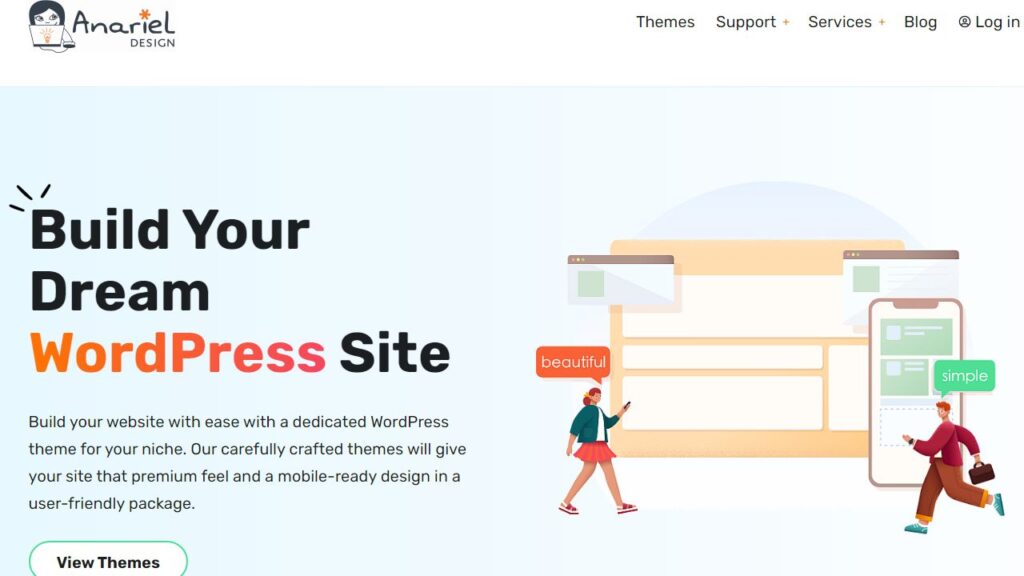
“Good content is not just about the story you tell but how you tell it.” This sentiment rings especially true in the realm of SEO content writing, where the structure of your content can significantly impact its readability and, by extension, its performance in search engine rankings. Optimizing your content’s structure makes it easier for both search engines and human readers to digest, ensuring that your message is not just seen but understood and appreciated.
A well-structured piece of content guides the reader through your narrative or argument in a logical and engaging manner. This involves not only the use of headings and subheadings to break up text but also short, digestible paragraphs and varied sentence lengths to keep the reader’s interest. By incorporating your primary keyword and its variations naturally within these elements, you enhance your content’s SEO without sacrificing readability. The goal is to craft content that satisfies search algorithms and human curiosity alike.
Moreover, a structured approach to content creation facilitates a better user experience. Readers can easily scan your content to find the information they seek, which is crucial in an online environment where attention spans are notoriously short. A positive user experience, signaled by metrics such as lower bounce rates and longer dwell times, can significantly boost your content’s search engine rankings. Ultimately, by prioritizing structure and readability, you’re not just sharing information; you’re inviting your audience into a conversation.
Breaking Down the Ideal Content Layout
Creating the ideal content layout means understanding how readers interact with online content. Most people scan content in an F-shaped pattern, paying most attention to headings, the beginnings of paragraphs, and bullet points. This insight is invaluable for SEO content writers aiming to maximize the visibility and impact of their work.
Your content should start with a compelling introduction that clearly states the topic and its relevance to the reader, incorporating your primary keywords early on. This sets the stage for what’s to come and helps search engines understand the content’s focus. Following the introduction, headings and subheadings should be used to organize the content into digestible sections. Each section should address a specific point or idea, making the content easier to follow and reinforcing its structure for SEO purposes.
Within each section, paragraphs should be concise and focused, ideally exploring a single idea. This clarity not only aids readability but also allows for the strategic placement of secondary keywords, enhancing the content’s SEO without disrupting the reader’s journey. By adhering to these layout principles, you ensure that your content is both engaging and optimized for search engines, striking the delicate balance between form and function.
Utilizing Bullet Points and Headers to Improve Skimability
Bullet points and headers are not just stylistic choices; they are powerful tools for improving the skimability and overall effectiveness of your content. They help break down complex information into manageable chunks, making it easier for readers to locate and absorb the information that’s most relevant to them. This is particularly important in SEO content writing, where the ability to quickly convey value can determine whether a visitor stays on your page or moves on.
Headers serve as signposts, guiding readers through your content and highlighting key topics and ideas. They should be descriptive and incorporate keywords naturally, offering clues to search engines about the content’s structure and focus. Meanwhile, bullet points can be used to list features, benefits, or key takeaways, providing a clear and concise summary of important points. This format not only caters to the reader’s preference for quick access to information but also enhances the content’s visibility in search results through featured snippets.
By thoughtfully incorporating bullet points and headers, you not only make your content more accessible to readers but also more attractive to search engines. This dual focus on readability and SEO optimization is key to crafting content that ranks well and resonates with your audience. In doing so, you create a user-friendly experience that encourages engagement, sharing, and return visits, driving the success of your content in a competitive online landscape.
4. Boost Your SEO Content Writing with Rich Media: 3 Types That Matter
Just as a picture is worth a thousand words, in the digital realm, rich media can be worth a thousand clicks. Incorporating rich media such as images, videos, and infographics into your SEO content writing isn’t just about aesthetics; it’s about enhancing user engagement, understanding, and search engine visibility. These elements can transform static text into dynamic, interactive content that captivates and retains audience attention.
Rich media plays a crucial role in storytelling and information dissemination, offering a multisensory experience that can significantly increase the time visitors spend on your site. Images can break up long stretches of text, making content more accessible and less daunting to readers. Videos and infographics, on the other hand, can simplify complex topics and provide a quick overview or deep dive into the subject matter. By integrating these types of rich media, you’re not only enriching the user experience but also providing varied entry points for different types of learners and browsers.
However, it’s not just about throwing in any media you find. Optimizing these elements for SEO—through the use of relevant keywords in file names, alt text, and surrounding content—can lead to improved search engine rankings and visibility. It’s essential to ensure that these media types are high-quality, load quickly, and are mobile-friendly, as these factors contribute to both user satisfaction and SEO performance. By carefully selecting and optimizing rich media, your content becomes more engaging, informative, and shareable, making it a powerful tool in your digital marketing arsenal.
Elevating User Experience and Engagement with Visuals
In the vast ocean of online content, visuals serve as lighthouses, guiding users to your content and keeping them engaged. Visual elements like images, videos, and graphics don’t just add color and life to your content; they also play a pivotal role in breaking down information, making it easier for users to digest and remember. This enhanced user experience leads to increased engagement, as visuals can convey emotions and concepts that text alone might not fully capture.
Utilizing visuals wisely can turn a good piece of content into a great one by adding layers of understanding and interest. For instance, a well-placed infographic can summarize a lengthy blog post, or a short video can introduce a complex topic, making your content more accessible to a broader audience. This not only aids in comprehension but also encourages users to share your content, expanding its reach and impact.
It’s important to remember that each visual should serve a purpose, whether it’s illustrating a point, breaking up text, or providing an example. Random or unrelated visuals can confuse readers and dilute the message. By thoughtfully integrating visuals that complement and enhance your text, you create a cohesive, engaging piece of content that resonates with your audience, encouraging them to stay longer and explore further.
Optimizing Images and Videos for SEO: A Step-by-Step Guide
Optimizing images and videos for SEO is not an afterthought but a crucial step in content creation that can significantly impact your site’s visibility and user experience. This process begins with choosing relevant, high-quality visuals that are directly related to your content. Once you’ve selected the right images and videos, the next steps are to ensure they are properly tagged and described, making them easily discoverable by search engines.
For images, this involves using descriptive, keyword-rich file names and alt text that accurately depict the image content. This not only helps search engines understand and index your images but also improves accessibility for users with visual impairments. Videos require a bit more finesse, including the use of engaging titles, descriptions packed with relevant keywords, and if possible, transcripts. These elements help search engines understand the video content and context, enhancing its findability.
Moreover, ensuring that your visuals are optimized for fast loading times is essential, as slow-loading images or videos can hurt your site’s bounce rate and rankings. This might involve compressing files, using the right file formats, and implementing lazy loading techniques. By following these steps, you not only make your content more attractive and accessible to users but also boost its performance in search results, driving more traffic and engagement to your site.
5. Master Internal Linking: Strengthen Your SEO Web with 5 Strategies
While it’s true that external links to your site can greatly boost your SEO, the power of internal linking cannot be overlooked. Internal links not only aid in website navigation but also establish a hierarchy of information on your site, guiding both users and search engines through your content. By implementing strategic internal linking, you can significantly enhance your site’s SEO performance, keeping readers engaged and circulating within your digital ecosystem.
Creating a comprehensive internal linking strategy involves more than just linking your pages together randomly. It’s about understanding the relationship between your content pieces and using this knowledge to guide visitors seamlessly from one page to another. This not only improves user experience but also helps search engines crawl and index your site more effectively. Using relevant, keyword-rich anchor text for these links can further boost your SEO by helping search engines understand the context of your pages.
Implementing a thoughtful internal linking strategy can spread page authority across your website, boosting the ranking potential of individual pages. Prioritize linking from high-authority pages to those that need a boost, and ensure that every piece of new content links back to existing content where relevant. This creates a network of links that strengthens over time, making your site more authoritative and visible in search engine results. By continuously refining your internal linking strategy, you can create a more cohesive and user-friendly website that performs better in search rankings.
The Importance of Anchor Text Diversity
Anchor text, the clickable text in a hyperlink, plays a crucial role in internal linking and by extension, SEO. While it may be tempting to repeatedly use exact-match keywords as anchor text to boost rankings, this approach can appear manipulative to search engines and may lead to penalties. Instead, embracing anchor text diversity is key to a healthy and effective internal linking strategy. Varied anchor text provides clear context to users and search engines about the linked content, without the risk of over-optimization.
Diverse anchor texts incorporate a mix of exact match keywords, partial match keywords, branded terms, and generic phrases. This variety not only makes your site more natural and user-friendly but also avoids triggering search engine spam filters. By carefully selecting anchor texts that are relevant and descriptive, you can enhance the user experience, making it easier for visitors to navigate your content while subtly reinforcing your keyword strategy.
Balancing anchor text diversity requires a strategic approach. Analyze your existing content to identify opportunities for more natural linking. Incorporate synonyms, related terms, and even calls-to-action as anchor texts. This approach not only improves the SEO value of your internal links but also enriches the content’s contextual relevance, leading to a more robust, search engine-friendly site that better serves your audience’s needs.
Mapping Out Your Site’s Internal Link Structure for Better Indexing
A well-planned internal link structure acts as a roadmap for search engines, guiding them through your site’s content and highlighting the most important pages. By mapping out your site’s internal link structure, you can ensure that search engines can easily find and index all your pages, boosting your site’s overall SEO performance. This strategic framework connects your content in a meaningful way, enhancing both discoverability and user experience.
To effectively map out your site’s internal link structure, start by identifying your cornerstone content—these are the key pages you want to rank highest in search engine results. From there, create clusters of related content around these cornerstone pieces, linking them in a way that makes sense for both users and search engines. This method not only organizes your content logically but also distributes page authority across your site, lifting the SEO potential of individual pages.
Regularly reviewing and updating your internal link structure is vital to adapt to new content and changing SEO landscapes. Tools like site audits can help identify broken links or opportunities for additional links, ensuring your internal linking strategy remains effective. By continuously optimizing your internal link structure, you create a more navigable, user-friendly website that is better understood by search engines, leading to improved visibility and rankings in search results.
6. Encourage Audience Interaction: Transform Readers into Participants

Surprisingly, one of the most underutilized strategies in SEO and content marketing is directly engaging your audience by transforming passive readers into active participants. This approach not only enhances user experience but significantly contributes to your site’s SEO through increased dwell time and interaction rates. By inviting your audience to engage, you create a dynamic community around your content, which search engines recognize as a sign of quality and relevance.
Encouraging audience interaction involves crafting content that speaks directly to your readers, asking for their opinions, and prompting them to share their experiences. This strategy creates a two-way conversation that can significantly enrich your content’s value. Implementing interactive elements like polls, surveys, and quizzes can also keep your audience more engaged. These tools not only make your content more engaging but also provide valuable insights into your audience’s preferences and behaviors.
Social sharing buttons and comment sections are simple yet effective ways to encourage audience participation. By making it easy for readers to share your content or leave a comment, you increase the likelihood of engagement. Remember, each interaction on your site sends positive signals to search engines about the quality of your content. Engaging with your audience in the comments section not only builds community but also gives you the opportunity to incorporate additional keywords and answer queries directly, further boosting your SEO efforts.
Implementing Call-to-Actions That Drive Engagement
It might come as a surprise, but the right call-to-action (CTA) can dramatically transform your content’s engagement rates. CTAs are not just about closing a sale; they are crucial in guiding your readers through the desired actions on your site, whether it’s commenting, sharing, or subscribing. A well-crafted CTA can significantly increase your content’s interactivity, making it more likely for your audience to engage with your brand beyond just reading.
The secret to effective CTAs lies in their relevance and appeal. Tailoring your CTAs to match the content’s context and the audience’s interests can lead to higher engagement rates. For instance, a CTA at the end of an informative blog post could encourage readers to download a related guide, thus providing additional value while prompting further interaction. This not only enhances the user experience but also contributes to your site’s SEO by keeping visitors engaged longer.
Experimentation and personalization are key to finding what works best for your audience. Testing different CTA placements, wording, and designs can reveal valuable insights into what drives your audience to act. Remember, every click or interaction is a positive signal to search engines and an opportunity to deepen the relationship with your audience. By continuously refining your CTAs, you can create a more engaging and SEO-friendly website that encourages visitors to become active participants in your content ecosystem.
Leveraging Comments and Social Shares for SEO Boost
Many overlook the SEO value of comments and social shares, yet these interactions are gold mines for boosting your site’s visibility. Comments not only signal to search engines that your content is engaging and valuable but also provide fresh, user-generated content that can help your page rank for additional keywords. Engaging with comments, in turn, fosters a community around your brand, encouraging repeat visits and further interaction.
Social shares extend the reach of your content beyond your immediate audience, introducing your brand to new eyes and potentially increasing your site traffic. Each share is a vote of confidence in your content, which search engines can interpret as a sign of credibility and authority. Encouraging social shares can be as simple as including share buttons in your content and actively asking your audience to share if they found the content useful.
To maximize the SEO benefits of comments and social shares, it’s crucial to actively manage and promote these interactions. Responding to comments not only engages your audience but also encourages others to join the conversation, creating a more dynamic and interactive content experience. Similarly, highlighting popular or insightful comments can stimulate further discussion, adding more depth to your content and making it more attractive to search engines. By leveraging these strategies, you can transform passive content consumption into active participation, significantly enhancing your SEO efforts.
7. Understanding User Intent: The Key to Relevant SEO Content Writing
In the realm of SEO, grasping user intent is like unlocking a treasure chest—both reveal valuable insights that can dramatically enrich your content strategy. Just as a locksmith uses the right tools to open a lock, a skilled content writer uses knowledge of user intent to craft content that perfectly matches what the audience seeks. Recognizing the difference between someone looking for information versus someone ready to purchase can transform your SEO efforts, making your content not just visible but truly relevant.
Addressing user intent starts with segmenting your audience based on their journey stages—awareness, consideration, and decision. By understanding what drives your audience at each stage, you can tailor your content to meet their needs precisely. For example, informational content like how-to guides or industry insights serves those in the awareness stage, while product comparisons and reviews are more suited for the consideration phase. This strategic alignment ensures your content resonates with the right audience at the right time, enhancing both engagement and conversion rates.
To effectively match content with user intent, it’s essential to delve into keyword research, looking beyond the words to the motivations behind the searches. Tools like Google’s “People also ask” feature or keyword research tools that categorize intent can provide invaluable insights. Additionally, analyzing the type of content that currently ranks for your target keywords can offer clues about what users are looking for. By crafting content that aligns with these insights, you not only improve your SEO but also build a deeper connection with your audience, establishing your site as a go-to resource in your niche.
Matching Content to the Different Stages of User Intent
Understanding the nuances of user intent across the buyer’s journey is akin to a chef knowing the right ingredients for each course of a meal—it’s crucial for delivering a satisfying experience. Each stage of the journey, from initial awareness to the final decision-making, requires content that speaks directly to the user’s needs and questions at that moment. By fine-tuning your content to align with these stages, you ensure that your audience finds value at every touchpoint, fostering trust and encouraging further engagement.
For those at the awareness stage, educational content that addresses broad topics related to your industry can attract and inform potential customers. This type of content sets the foundation for a relationship, positioning your brand as helpful and knowledgeable. As users move to the consideration stage, more detailed comparisons, case studies, and expert reviews can help them evaluate their options. Here, your content should aim to guide and advise, highlighting the benefits and differentiators of your offerings.
At the decision stage, users are ready to convert, seeking specific information that reassures them of their choice. Content that facilitates this step could include detailed product information, purchasing guides, and testimonials. It’s also crucial to ensure that this content is easily accessible and straightforward, removing any barriers to conversion. By meticulously matching your content to the user intent at each stage, you not only enhance your SEO but also improve the overall user experience, leading to higher satisfaction and increased loyalty.
Analyzing Search Intent: Tools and Techniques for Success
Delving into search intent isn’t just about understanding what users type into a search bar; it’s about uncovering the why behind their queries. Like a detective piecing together clues, content creators can use a variety of tools and techniques to gain deep insights into user intent, guiding the creation of content that genuinely meets user needs. This investigative process is key to developing a content strategy that captures attention and ranks well in search engine results.
Keyword research tools play a pivotal role in this analysis, offering more than just volume and competition data. Many of these tools now provide insights into the intent behind searches, categorizing keywords by informational, navigational, transactional, or commercial intent. By leveraging this data, you can align your content strategy with the specific needs of your audience, ensuring that your content answers their questions and meets their expectations.
Beyond keyword tools, analyzing the SERPs (Search Engine Results Pages) for your target keywords can reveal a wealth of information about user intent. The presence of certain types of content—such as blog posts, product pages, or videos—can indicate what search engines believe users are looking for. Additionally, features like featured snippets, “People also ask” sections, and related searches offer further clues about the questions and topics relevant to your audience. By integrating these insights into your content planning, you can create content that not only ranks well but also genuinely satisfies the search intent, establishing your site as a valuable resource in your industry.
8. Monitor and Adapt: Using Analytics to Refine Your SEO Strategy
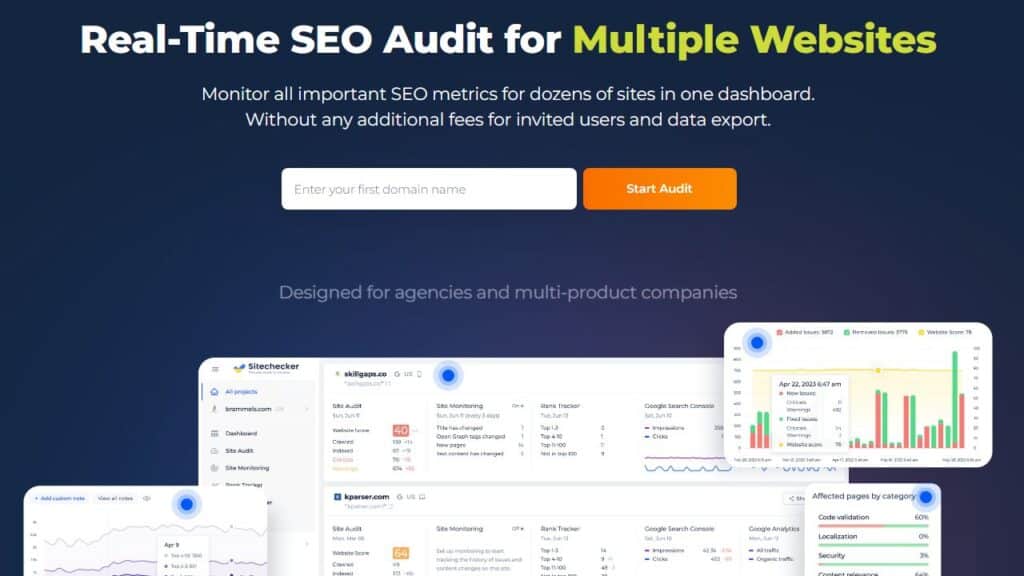
The digital landscape is constantly evolving, and keeping pace requires a vigilant eye on your SEO strategy’s performance. Monitoring and adapting your approach based on analytics isn’t just a recommendation; it’s a necessity for anyone looking to sustain and improve their online presence. Analytics offer a clear lens through which you can view the effectiveness of your content, understand user behavior, and make informed decisions that propel your site forward.
Key to this process is the selection of relevant metrics that align with your SEO objectives. Whether it’s tracking organic traffic, bounce rates, conversion rates, or keyword rankings, each metric offers unique insights into how well your content resonates with your audience. By regularly reviewing these metrics, you can identify trends, discover opportunities for optimization, and even anticipate shifts in user interests or search engine algorithms.
Adapting your SEO strategy based on analytics involves more than just tweaking keywords or updating meta tags. It’s about deeply understanding what your audience values and how they interact with your content. For instance, if analytics reveal that certain types of content consistently outperform others, this insight can guide your content creation efforts, focusing more on what works best for your audience. Similarly, if certain pages have high bounce rates, it might indicate issues with content relevance, user experience, or page load times.
Key Performance Indicators (KPIs) for SEO Content Success
Selecting the right Key Performance Indicators (KPIs) is crucial for evaluating the success of your SEO content strategy. These metrics should reflect your specific goals, whether increasing brand awareness, driving traffic, or boosting conversions. Effective KPIs provide actionable insights, allowing you to gauge the performance of your content and make necessary adjustments to enhance its impact.
Organic traffic is one of the most important KPIs, as it measures the number of visitors coming to your site from search engines. An uptick in organic traffic indicates that your SEO efforts are moving in the right direction. Equally important is the engagement metric, including time spent on site and pages per session, which reflects the quality of your content and its relevance to the audience. High engagement rates often correlate with higher rankings and improved SEO performance.
Conversion rate is another critical KPI, especially for sites with a clear call-to-action, such as e-commerce stores or service providers. It measures the percentage of visitors who take the desired action, be it making a purchase or signing up for a newsletter. Monitoring keyword rankings for targeted search terms can also offer insights into the effectiveness of your content in meeting user intent and improving your site’s visibility in search results.
Adapting Your Content Strategy Based on Analytics Insights
Analytics insights serve as the foundation for a dynamic and effective content strategy. By closely monitoring how users interact with your site and content, you can identify patterns and preferences that inform strategic adjustments. This adaptive approach ensures your content remains relevant and engaging, directly contributing to improved SEO outcomes and a better user experience.
For example, if analytics reveal that certain topics or types of content generate more engagement or conversions, you can prioritize these in your content calendar. This insight allows you to allocate resources more efficiently, focusing on what truly matters to your audience. Conversely, identifying content that underperforms gives you the chance to revisit and revise it, ensuring every piece on your site contributes positively to your SEO goals.
Understanding the pathways through which users navigate your site can also offer valuable insights. If certain pages act as frequent entry points but have high bounce rates, it might indicate a mismatch between the content and user intent or expectations. Addressing these discrepancies by aligning content more closely with user intent can significantly improve user satisfaction and SEO performance.
Lastly, adapting your content strategy based on analytics is not a one-time task but a continuous process of learning and optimization. By staying attuned to the data and being willing to experiment and iterate, you can ensure that your content strategy not only responds to current trends and user behaviors but also anticipates future changes. This proactive approach to SEO through analytics empowers you to build a robust, resilient online presence that thrives amid the ever-changing digital landscape.
Elevate Your SEO Content Writing for Top Search Engine Rankings
Achieving top search engine rankings is a goal for many digital marketers and content creators. It signifies not just visibility but also an endorsement of your content’s relevance and value to users. Elevating your SEO content writing is not about chasing algorithms; it’s about understanding and serving your audience better than anyone else. This focus on quality and relevance is what ultimately drives success in search engine rankings.
To elevate your SEO content writing, start with a solid foundation of keyword research, but don’t stop there. Integrate those keywords naturally into content that addresses the needs, questions, and interests of your audience. Remember, search engines prioritize content that users find useful and engaging. Your aim should be to create content that resonates with your audience, encouraging them to stay longer on your site and interact with your content.
Additionally, keep your content fresh and up-to-date. The digital landscape changes rapidly, and what was relevant yesterday may not be today. Regular updates and new content signal to search engines that your site is a current and valuable resource for users. This doesn’t mean you have to start from scratch; sometimes, updating and expanding existing content can be just as effective.
Lastly, don’t forget the technical aspects of SEO. Ensure your site is mobile-friendly, loads quickly, and provides a good user experience. These factors play a significant role in search rankings and can enhance the effectiveness of your content. By combining high-quality, engaging content with solid SEO practices, you can elevate your site to the top of search engine rankings, attracting more traffic and achieving your digital marketing goals.
Frequently Asked Questions (FAQ)
What is SEO content writing?
SEO content writing is the process of creating high-quality, valuable content that is optimized for search engines and aims to improve visibility in search engine results pages (SERPs). This involves using targeted keywords, structuring content for readability, and ensuring the content meets user intent to drive organic traffic to a website.
How do I start with keyword research for SEO content writing?
To start with keyword research, use tools like Google’s Keyword Planner, SEMrush, and Ahrefs to identify relevant keywords that your target audience is searching for. Focus on finding a mix of high-volume and long-tail keywords that align with your content goals. Understand the search intent behind these keywords to ensure your content effectively meets users’ needs.
What are the best practices for integrating keywords into my content?
Best practices for integrating keywords include placing them naturally in titles, meta descriptions, headings, and throughout the content. Avoid keyword stuffing, as it can lead to penalties from search engines. Instead, focus on using keywords where they fit contextually and enhance the readability and value of your content.
How important are meta titles and descriptions in SEO content writing?
Meta titles and descriptions are crucial for SEO content writing as they provide a brief summary of your content to search engines and potential visitors. Well-crafted meta titles and descriptions can significantly impact click-through rates (CTR) by making your content more appealing and relevant to search queries. They should include primary keywords and be concise and engaging.
How can I optimize my content structure for better SEO?
To optimize content structure for SEO, use clear and descriptive headings and subheadings to break up text. This not only improves readability but also helps search engines understand the hierarchy and importance of the content. Use bullet points, numbered lists, and short paragraphs to make the content easier to scan and digest.
What types of rich media should I include in my SEO content?
Incorporating rich media such as images, videos, and infographics can enhance user engagement and improve SEO. These elements should be relevant to the content and optimized for SEO with descriptive file names, alt text, and captions. Rich media makes content more interactive and appealing, increasing time on page and reducing bounce rates.
How does internal linking help with SEO?
Internal linking helps SEO by creating a clear path for search engines to crawl and index your website’s content. It helps distribute page authority across your site, improves navigation, and encourages visitors to explore more pages, reducing bounce rates. Use keyword-rich anchor text for internal links to provide additional SEO value.
What is user intent, and why is it important for SEO content writing?
User intent refers to the purpose behind a user’s search query. Understanding user intent is crucial for SEO content writing because it ensures that your content matches what users are looking for, increasing its relevance and usefulness. This alignment helps improve rankings and drives more qualified traffic to your site.
How can I encourage audience interaction on my website?
Encourage audience interaction by adding interactive elements like polls, surveys, quizzes, and comment sections. Prompt readers to engage with calls-to-action (CTAs) that invite them to comment, share, or participate. Engaging with your audience builds community and can lead to more time spent on your site, positively impacting SEO.
What role do analytics play in refining an SEO strategy?
Analytics play a vital role in refining an SEO strategy by providing data on how users interact with your content and which strategies are effective. By analyzing metrics such as organic traffic, bounce rates, and conversion rates, you can identify strengths and weaknesses in your SEO efforts and make data-driven decisions to optimize your strategy.
How often should I update my SEO content?
Regularly updating your SEO content is important to keep it relevant and accurate. Update content whenever there are significant changes in your industry or if new information becomes available. Additionally, revisiting content periodically to add value, refresh keywords, and ensure all links are functioning can help maintain and improve search rankings.
What is the difference between informational and transactional keywords?
Informational keywords are used by searchers looking for information or answers to questions, while transactional keywords are used by those looking to make a purchase or complete a transaction. Understanding the difference helps tailor content to different stages of the buyer’s journey, aligning with user intent and improving SEO effectiveness.
How do I use external links in my SEO content?
Use external links to reputable, authoritative sources to back up claims or provide additional context in your content. This can enhance credibility and trustworthiness, which is important for both users and search engines. Ensure external links are relevant and add value to your content to maximize their positive impact on SEO.
What are the benefits of using a content calendar for SEO content writing?
A content calendar helps plan and organize your content creation and publication schedule. It ensures consistency, allows for strategic planning around keyword usage and content themes, and helps keep track of updates and seasonal content. Using a content calendar can enhance SEO by ensuring a steady stream of fresh, relevant content.
How can I optimize my content for mobile users?
To optimize content for mobile users, ensure your website is responsive and loads quickly on all devices. Use a mobile-friendly design, with easy-to-read fonts and buttons, and avoid large images or videos that may slow down the loading time. Make sure content is easily navigable on smaller screens, enhancing user experience and SEO performance.


